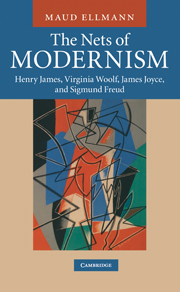Book contents
- Frontmatter
- Contents
- Acknowledgements
- List of abbreviations
- 1 Introduction: what hole?
- 2 The modernist rat
- 3 Strandentwining cables: Henry James's The Ambassadors
- 4 The Woolf woman
- 5 The darkened blind: Joyce, Gide, Larsen, and the modernist short story
- 6 The name and the scar: identity in The Odyssey and A Portrait of the Artist as a Young Man
- 7 Skinscapes in Ulysses
- Afterword
- Notes
- Bibliography
- Index
- References
Bibliography
Published online by Cambridge University Press: 10 January 2011
- Frontmatter
- Contents
- Acknowledgements
- List of abbreviations
- 1 Introduction: what hole?
- 2 The modernist rat
- 3 Strandentwining cables: Henry James's The Ambassadors
- 4 The Woolf woman
- 5 The darkened blind: Joyce, Gide, Larsen, and the modernist short story
- 6 The name and the scar: identity in The Odyssey and A Portrait of the Artist as a Young Man
- 7 Skinscapes in Ulysses
- Afterword
- Notes
- Bibliography
- Index
- References
- Type
- Chapter
- Information
- The Nets of ModernismHenry James, Virginia Woolf, James Joyce, and Sigmund Freud, pp. 206 - 232Publisher: Cambridge University PressPrint publication year: 2010



